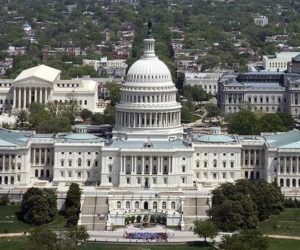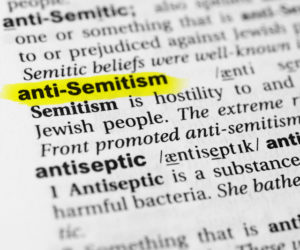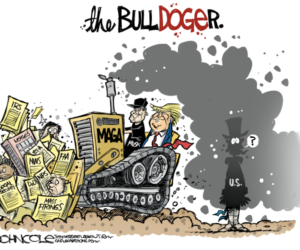Investigators continue to piece together the story of the mid-week explosion in West, Texas (population 2,800) that killed 14 as residents return home. President Obama offered disaster relief on Friday.
.@wfaachannel8 has a clear aerial look at the explosion zone in #WestTX. More photos: abcn.ws/15oATvm twitter.com/ABC/status/324…
— ABC News (@ABC) April 18, 2013
1. This was not a fertilizer manufacturing facility
Media reports have characterized the explosion site — 11 buildings on 10 acres — as a “fertilizer plant.” The Dallas Morning News has clarified that West Fertilizer Co. and Adair Grain is a farm supply company that sold fertilizer as well as grain, feed and tools. “The company mixed fertilizers tailored to farmers’ specific needs,” which is a common practice throughout rural America. It did not manufacture fertilizer.
When the facility was built in 1962, it was about a mile north of town. But the town grew – like many towns across the country – and so today it was less than 3,000 feet from a school and within blocks of a nursing home and apartment complex. Who makes those zoning decisions? Usually a local zoning board.
The Texas Feed and Fertilizer Control Service inspects feed and fertilizer distributors like West Fertilizer. There are “5,92 such establishments” in the state, according to USA Today.
2. There was a lot of unreported fertilizer at the facility
Initial news reports focused on two tanks capable of storing 54,000 pounds of anhydrous ammonia, a fertilizer and poisonous gas.
However, in 2012, the facility also stored a minimum of 540,000 pounds (270 tons) of ammonium nitrate. According to NBC, facilities are supposed to report to the Department of Homeland Security if they store more than 400 pounds of ammonium nitrate. The reason? The material can be used as a component of a bomb and was part of the Oklahoma City bomb that killed 168.
3. Yet ammonium nitrate is only “slightly” flammable
News reports have cited West Fertilizer filings with EPA that its anhydrous ammonia presented no risk of explosion, almost with a tone of incredulity. But here’s what that material safety data sheet (MSDS) says: anhydrous ammonia is a Non-Flammable Gas.
News reports have also characterized ammonium nitrate as a “dangerous explosive.” In contrast, the MSDS for ammonium nitrate describes it as “[s]lightly flammable to flammable in presence of heat, of combustible materials, of organic materials” and says that it “[m]ay be combustible at high temperature.”
According to Jimmie Oxley, a researcher at the University of Rhode Island, it is “very difficult” to get ammonium nitrate “to detonate at a reasonable scale.” However, as it burns, ammonium nitrate produces oxygen, which exacerbates danger and helps explain the 1947 industrial accident involving ammonium nitrate in Texas City, TX. This was largest industrial accident in the US; it killed 600.
4. There are 14 dead, most first responders
The photos and names of the three people who died in Boston have been on national news, but you’ll be hard-pressed to identify the 14 who have died in Texas. Reportedly, 11 were first responders.
I will update this list of those killed in the West TX explosion as names become public.
- Buck Uptmor, 44, died helping herd horses away from the burning plant
- Cody Dragoo, 50 served the fire department for about 15 years after moving to West from Montana; he was the only employee who died; he had returned to the site as a volunteer firefighter.
- Cyrus Reed, 29 of the Abbott fire department
- Doug Snokhous, 50, and Robert Snokhous, 47 were volunteer fire fighters in West
- Jerry Chapman, 26 of the Abbott fire department
- Jimmy Matus, 52, a career firefighter from West
- Joey Pustejovsky, 29, volunteer firefighter and West city secretary
- Kenny Harris, 52, off-duty Dallas Fire-Rescue captain who lived in West
- Morris Bridges, 41, volunteer firefighter from West
- Perry Calvin, 37, of Purden
The National Fallen Firefighters Foundation is accepting donations to help the survivors of the personnel who died in the line of duty in the West TX explosion.
Featured photo: Flickr creative commons license
Known for gnawing at complex questions like a terrier with a bone. Digital evangelist, writer, teacher. Transplanted Southerner; teach newbies to ride motorcycles. @kegill (Twitter and Mastodon.social); wiredpen.com
















